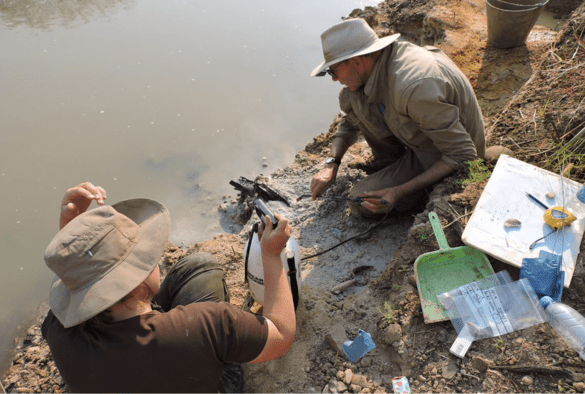Half a million years ago, earlier than was previously thought possible, humans were building structures made of wood, according to new research by a team from the University of Liverpool and Aberystwyth University.
The research, published in the journal Nature, reports on the excavation of well-preserved wood at the archaeological site of Kalambo Falls, Zambia, dating back at least 476,000 years and predating the evolution of our own species, Homo sapiens.
Expert analysis of stone tool cut-marks on the wood show that these early humans shaped and joined two large logs to make a structure, probably the foundation of a platform or part of a dwelling.
This is the earliest evidence from anywhere in the world of the deliberate crafting of logs to fit together. Until now, evidence for the human use of wood was limited to its use for making fire, digging sticks and spears.
Wood is rarely found in such ancient sites as it usually rots and disappears, but at Kalambo Falls permanently high water levels preserved the wood.
This discovery challenges the prevailing view that Stone Age humans were nomadic. At Kalambo Falls these humans not only had a perennial source of water, but the forest around them provided enough food to enable them to settle and make structures.
Professor Larry Barham, from the University of Liverpool’s Department of Archaeology, Classics and Egyptology, who leads the ‘Deep Roots of Humanity’ research project said:
This find has changed how I think about our early ancestors. Forget the label ‘Stone Age,’ look at what these people were doing: they made something new, and large, from wood. They used their intelligence, imagination, and skills to create something they’d never seen before, something that had never previously existed.
They transformed their surroundings to make life easier, even if it was only by making a platform to sit on by the river to do their daily chores. These folks were more like us than we thought.
The site of Kalambo Falls on the Kalambo River lies above a 235 metres (772 foot) waterfall on the border of Zambia with the Rukwa Region of Tanzania at the edge of Lake Tanganyika. The area is on a ‘tentative‘ list from UNESCO for becoming a World Heritage site because of its archaeological significance.







